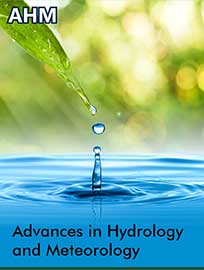 Research Article
Research Article
Remote Sensing Analysis of the Impact of COVID lockdowns on Water Quality in Four Water Bodies in Latin America
Ivan Lalovic1, Fernando Miralles-Wilhelm2,3*, Sara de Moitié1, Philipp Grötsch1, Adam Belmonte1, Jihoon Lee4 and Raúl Muñoz Castillo4
1Gybe, Portland OR, USA
2The Nature Conservancy, Arlington VA, USA
3George Mason University, Fairfax VA, USA
4Inter-American Development Bank, Washington DC, USA
Fernando Miralles-Wilhelm, The Nature Conservancy and George Mason University, USA.
Received Date: August 12, 2022; Published Date: September 02, 2022
Abstract
This investigation introduces remote sensing (RS) methods for monitoring of water quality in support of measuring, understanding, and managing impacts in sensitive water bodies. In addition to providing a baseline assessment of water quality at select locations over time, these methods can be used to rapidly assess changes in water quality conditions resulting from socioeconomic conditions introduced by local and regional response to the Covid-19 pandemic and associated lockdowns. This RS methodology developed for this study was implemented in 4 major water bodies across the region of Latin America: Guanabara Bay in Rio de Janeiro, Brazil; Lake Titicaca in Bolivia and Peru; Ypacarai Lake near Asuncion, Paraguay; and the Rio Reconquista Basin near Buenos Aires, Argentina. The most significant changes that were observed, in relation to the Covid-19 restrictions, generally occur in areas directly adjoining or downstream from densely populated areas. For example, in Rio de Janeiro (Guanabara Bay), significant differences in water quality were observed at several locations in Guanabara Bay (Rio de Janeiro) corresponding to a timeframe generally coincident with Covid-19 lockdown measures. In Lake Titicaca, significant differences in WQ metrics coincident with Covid-19 lockdown measures have also been observed at several locations. Primary lockdown measures in the Buenos Aires region between March and July 2020 appear to precede the increased Chlorophyll-a concentrations across several analysis locations during Dec 2020 & Jan/Feb 2021, which could be indicative to higher untreated or partially treated wastewater production during the lockdown period. In Ypacarai Lake, there were no statistically significant changes observed in water quality parameters pre- and post-Covid-19 lockdown measures at any of the study locations. Remote Sensing applied to monitoring of water quality in lakes, rivers and reservoirs is a valuable emerging technology that can provide geospatial information about water clarity, nutrient, bacterial and industrial pollution from urban and rural sources. The methodology presented in this paper using cloud computing allows rapid monitoring deployment and scalable coverage across numerous watersheds and geographies. Although this paper presents a comprehensive analysis of this entirely new source of water quality data across the sites and locations of interest, a more detailed analysis can be performed by looking at different timeframes (e.g., entire data set or monthly aggregates) within these watersheds. Additional insights may be unraveled by further combining the water quality data sets of this work with other sources of information including local sensors, information from water and sanitation utilities and a more detailed analysis of the timing of location conditions and their local impacts.
-
Ivan Lalovic, Fernando Miralles-Wilhelm*, Sara de Moitié, Philipp Grötsch, Adam Belmonte, Jihoon Lee and Raúl Muñoz Castillo. Remote Sensing Analysis of the Impact of COVID lockdowns on Water Quality in Four Water Bodies in Latin America. Adv in Hydro & Meteorol. 1(2): 2022. AHM.MS.ID.000510.
-

This work is licensed under a Creative Commons Attribution-NonCommercial 4.0 International License.






